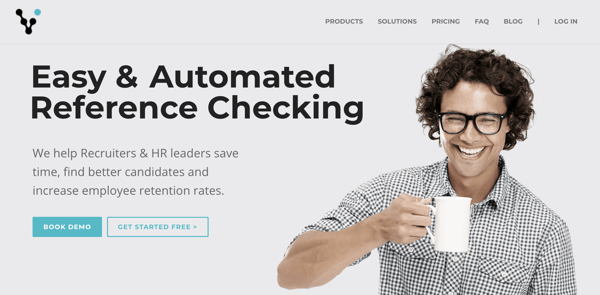The war for talent is real! In today’s tight labour market, it’s more important than ever to develop a strategy to recruit top talent. Steve Jobs said: “Go after the cream of the cream. A small team of A+ players can run circles around a giant team of B and C players.”
Building a highly skilled team starts with a great recruiting process to ensure the right candidates aren’t lost to your competition.
5 Benefits of a Great Recruiting Process
1. Saves time
A great recruiting process will weed out weak candidates before the interview stage, resulting in less wasted time with applicants that simply don’t fit the role or your company culture. It will also eliminate time-consuming questions that provide little to no value.
2. Simplifies on-boarding
A great recruiting process will limit surprises during employee on-boarding and ensure candidates are prepared for their new responsibilities before the first day.
3. Boosts productivity
A great recruiting process will help you hire the best people! Top performers can be up to 8 times more productive than the average employee according to recent research from McKinsey & Company. Attracting and hiring these candidates could be what pushes your team to accomplish ambitious goals, drastically accelerating growth and creating new opportunities for your business.
4. Reduces turnover
A great recruiting process will help you select candidates that align with company’s core values and purpose, which will increase job satisfaction and lower turnover.
5. Improves employer brand
A great recruiting process will do wonders for your employer brand. Happy candidates are more likely to share their experience with their network or through 3rd party platforms like Glassdoor. This demonstrates to other potential candidates that you care about their experience from day one.
Moreover, the top candidates that are hired through this process will become your company ambassadors and create positive brand association for your business. This will encourage other top candidates to apply, growing your applicant pool.
5 Steps to Build a Great Recruiting Process
1. Market career opportunities
An effective recruiting process begins long before a position opens up. Craft a compelling employee value proposition early by marketing your workplace culture.
Take advantage of your communication channels (LinkedIn, company blog, etc.) to provide insight into the lives of your employees. This can be as simple as a few posts about everyday office life, an employee spotlight, or a recruitment video with information for potential candidates. Be sure to integrate your company values and purpose in order to attract the right talent.
Here’s a tip: Always link your Careers page in related posts, even if you don’t have any open positions. This way, your audience will know where to look for future opportunities.
2. Use the right resources
Attracting top talent requires you to use every tool in your tool belt, and your greatest resource is always your people. Since potential candidates are often looking to their friends/peers for job opportunities and career advice, asking for referrals from current top performers is a great way to find candidates that will fit your company culture and deliver results.
Today’s technology is also a great resource to help build a great recruiting process. Experiment with various online methods to see what works best for you. Video applications are a great way to get to know your applicants before the interview and pre-screen the candidate pool for top talent. There are also tons of new ways to automate the recruiting process, like automated reference checking.
3. Set clear expectations
In order to find the best fit for your open position, it’s important to understand the role yourself. Seems obvious, right? However, employers often highlight the most important responsibilities without diving into the entirety of the role, leaving new hires to learn about them on the job. This can lead to job dissatisfaction or even prompt them to abandon the position.
The first step is to understand the role in advance. What will this team member be working on tomorrow? How about a year from now? Note all responsibilities and current/future projects.
Then, ensure most (if not all) of the aspects of the role are included in the job description. This allows your applicants to understand what they are applying for, and ensures an efficient interview without redundant explanations.
Go one step further by simulating real work in the interview. Use behavioural questions, create a test case, or ask them how they would respond to a real issue that your business is facing. Simulating real work will help you find the right fit while also demonstrating the nature of the role to the candidate.
4. Sell the role
Top talent is hard to come by, and these candidates are in high demand. In order to attract and secure these applicants, it’s important to frame the position in a way that will appeal to them.
A great way to sell the role would be to create a potential career plan with top candidates. Explain the goals and requirements of the job, then ask about their professional goals and aspirations. Try and find a way to integrate the two in a way that benefits both employer and employee. This demonstrates your commitment to employee growth while also helping you gauge their success in the role.
Be sure to discuss perks and benefits both in the job description and the interview to entice applicants. Nowadays, most employers offer an array of perks - from flexible hours, to telecommuting, to in-office massages - and it’s crucial that you set yourself apart.
As an added bonus, send a thank you note to your favourite candidates to show you appreciate them taking the time to apply (add a Guusto gift to look extra generous!).
5. Ask for feedback (and actually use it)
The best way to build a great recruiting process is to request feedback from candidates. This can be as easy as sending a thank you email asking how they felt about the process, or inviting applicants to complete a short anonymous survey.
Asking for feedback has two main benefits. Firstly, the candidates will get the impression that you care about their experience and will be an appreciative employer. Secondly, this feedback is a great resource for fine tuning your recruiting process to be as positive and efficient as possible for both parties.
Summary
Implementing the steps above will improve your recruiting process and help you hire the ‘cream of the cream’. Do you have another strategy that works for you? Let us know in the comments below!
What’s Next
As an HR leader, you often have to build the case for executives to approve programs and allocate budgets. So next week, we’ll explore How to Measure the ROI on Employee Recognition. It will cover the following in detail:
- What is ROI
- Measuring Investment for Recognition Programs
- Measuring Returns for Recognition Programs
- Why it's crazy to not invest in Employee Recognition
Hope you’ll join us for the discussion. Have something you want to learn more about? Let me know in the comments below or connect with me on LinkedIn.
Muucho Guusto :)
Skai

















